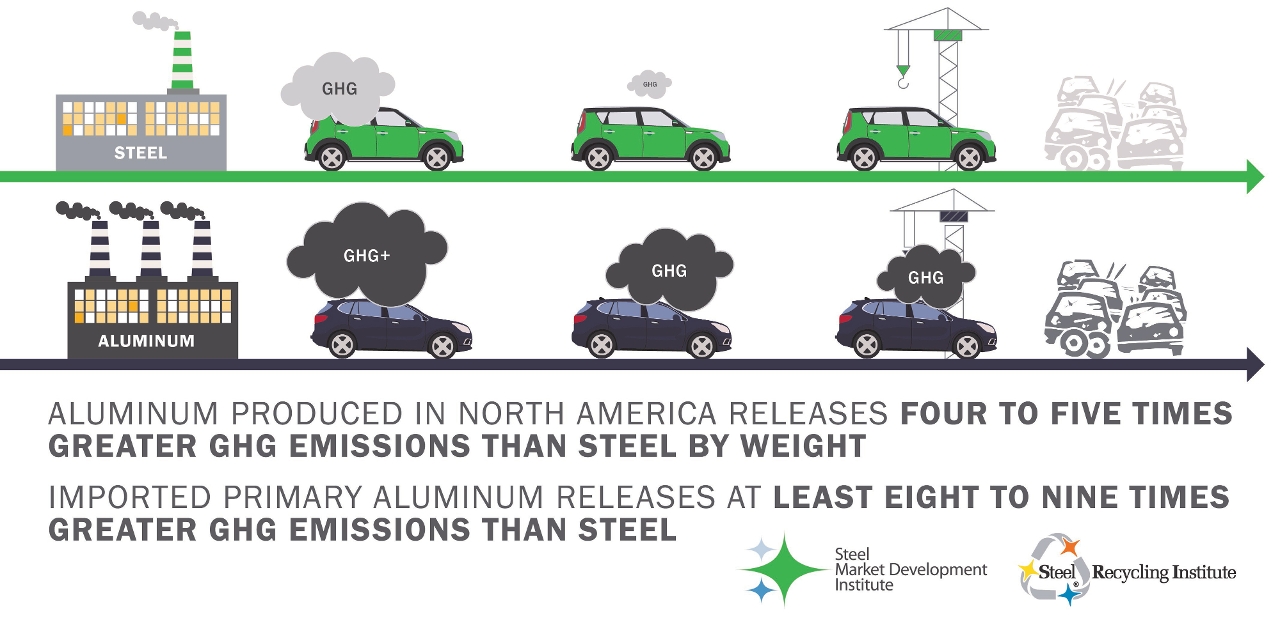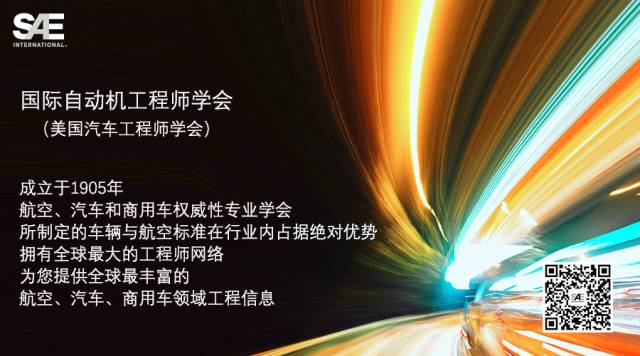 研究发现,在五种不同类型的车辆中,使用钢材料的车型在完整使用周期中对环境的影响最小。(图片来源:美国钢铁市场发展研究所)
研究发现,在五种不同类型的车辆中,使用钢材料的车型在完整使用周期中对环境的影响最小。(图片来源:美国钢铁市场发展研究所)
一份车辆评估研究表明,在车辆的完整使用周期中,大量使用先进高强度钢材料 (AHSS) 的车型在温室气体排放方面的数据,低于使用铝材料的同类车型。
2018 年芝加哥车展期间,美国钢铁市场发展研究所 (Steel Market Development Institute) 汽车市场副总裁 Jody Hall 博士在接受《汽车工程》采访时表示,“过去几年中,我们已经进行了大量类似的研究,但这次是我们首次对车辆在完整使用周期中的温室气体排放进行对比研究。”
钢铁市场发展研究所的研究主要集中在五种不同类型的 2016 款车型,分别为轿车、多功能车、皮卡、混合动力车和纯电动汽车。所有接受测试的车型都曾经过重新设计,每种车型中均包括一款主要使用钢材料的版本和一款主要使用铝材料的版本。Hall 博士表示,“我们发现,在所有车型中,采用钢材并进行汽车轻量化设计,都是厂商最环保的选择。”
来自哈佛大学、麻省理工学院、美国阿岗国家实验室及德国斯图加特可持续发展咨询公司、Thinkstep 等多方的代表评估了该机构有关“轻量化汽车在完整使用周期中的温室气体排放和能源消耗”的研究。
经过长达 10 个月的审查和验证,各方代表最终证实钢铁市场发展研究所的研究符合ISO要求。Hall 博士表示,“专家小组已经认可了我们所有的研究方法、参数选择及数据来源。”
自美国国家环境保护局宣布全美所有车辆厂商均需在 2025 年前达到 54.5 mpg 的平均公司燃油经济性指标以来,车辆减重工作都一直是各大汽车厂商的首要任务(注意,最新的燃油经济性指标数据可能会在未来几个月中有所变化,可参见昨天的微信推文)。
在 CAFE 标准公布之初,AK 钢铁公司首席执行官 Roger Newport 表示,大家都仅关注排气管处测量的尾气排放数据,“但我们真的必须从全局考虑,而不是只看这一个具体指标”,也就是说,在衡量车辆的环保水平时应考虑车辆在完整使用周期中的所有温室气体排放,甚至车辆材料的可回收性也必须考虑在内。
钢铁市场发展研究所的研究显示,除了钢材料以外,铝材料在生产过程中温室气体排放最低,是钢材的有力竞争对手。
Hall 博士认为,汽车材料在生产过程中温室气体排放也应计入车辆在完整使用周期中的碳足迹中。她指出,在北美地区,铝材料在生产时比钢材料排放地温室气体多 4 到 5 倍,而在全球范围内,铝材料生产的温室气体排放更是至少要比钢铁多 8 至 9 倍。此外,生产 1 公斤镁材料的温室气体排放约为钢材生产的 20 倍。
Hall 博士称:“在车辆的完整生命周期中,也就是大约 10 到 12 年的时间内,使用铝材取代钢材以实现轻量化汽车设计所带来的环保优势,完全不足以抵消铝材在生产过程中比钢材多排放的温室气体。”
A vehicle lifecycle assessment study shows that cars extensively using advanced high strength steels (AHSS) emit lower greenhouse gas (GHG) emissions than aluminum-intensive vehicles.
“We’ve done studies like this for several years, but this is the first time that we’ve had a study on vehicle lifecycle greenhouse gas emissions peer-reviewed,” Jody Hall, PhD, Vice President, Automotive Market, Steel Market Development Institute (SMDI), said in an interview with Automotive Engineering at the 2018 Chicago Auto Show.
The SMDI study focused on five different 2016MY vehicles (sedan, sport utility, pickup truck, hybrid-electric, and battery electric). Each vehicle was redesigned as an AHSS intensive- and an aluminum intensive-body to reduce weight. “In every case, we found that lightweighting with steel was the most environmentally friendly material choice,” she said.
Representatives from Harvard University, Massachusetts Institute of Technology, Argonne National Lab, and the Stuttgart,Germany-based sustainability consulting company, Thinkstep, evaluated SMDI’s “Life Cycle Greenhouse Gas and Energy Study of Automotive Lightweighting” document.
The 10-month review and validation process confirmed the study’s conformance to the International Organization for Standardization (ISO). “The panel approved all of our methods, all of the input parameters, and all of our data sources,” Hall said.
Vehicle weight reduction has been a top priority for automakers since the U.S. Environmental Protection Agency announced a Corporate Average Fuel Economy (CAFE) requirement of 54.5 mpg for passenger vehicles by 2025. (The mpg number could be revised in the coming months.)
According to Roger Newport, Chief Executive Officer of AK Steel Corporation, when CAFE standards were established, the tailpipe became the emissions target. “But you really need to look at the total picture, instead of just a section of it,” said Newport, noting that a start-to-finish GHG emissions evaluation includes the vehicle’s material recyclability.
The SMDI study pinpoints aluminum as steel’s closest GHG emissions competitor. According to Hall, GHG emissions released during a material’s production phase can be a big part of a vehicle’s environmental footprint.
Aluminum produced in North America releases four to five times more GHG emissions than steel, noted Hall. She added that for aluminum produced globally, it’s eight to nine times more GHG emissions than steel. And, it’s about 20 times more GHG emissions versus steel to produce a kg of magnesium.
"The dramatic increase in material production emissions for vehicles that are lightweighted with aluminum instead of AHSS is never offset by emissions reduction benefits during the vehicle's useful lifetime, which is the 10-12 years that the vehicle is driven," Hall claims.
Author: Kami Buchholz
Source: SAE Automotive Engineering Magazine
等级
打分
- 2分
- 4分
- 6分
- 8分
- 10分
平均分
